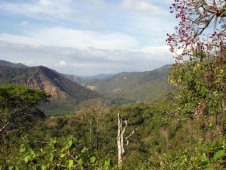
As of 2016 there are 13,092 IBAs, 10,764 of which are of global significance because of their importance to globally threatened species, range-restricted endemic species, biome-restricted species, or as bird congregation sites. Globally, the regional networks of Important Bird and Biodiversity Areas (IBAs) cover no more than 6–15% of the land or sea area. The areas identified are additionally important for the wellbeing of a correspondingly high number of plants and other animals. This localised approach concentrates conservation efforts and resources into key areas that maximise the benefits to biodiversity.

Across the globe 13,092 IBAs have been identified over the past three decades. Of these sites, 82% (10,764 sites) are of global significance, meaning that they are important for globally threatened species, range-restricted endemic species, biome-restricted species, or as congregating sites for birds. While IBAs were originally terrestrially focused, over the past decade efforts have also emphasised the importance of marine sites. Currently there are 1,815 marine IBAs, 89% (1,616 sites) of which are deemed to be of global significance. By selecting these specific sites, conservation efforts can be focused to maximise the benefits provided to a range of threatened species (see figure). Only a small proportion of each region is covered by IBAs (6–15%), indicating their high efficiency in concentrating conservation efforts (BirdLife International 2008). Further localisation of efforts is enabled by the identification of “IBAs in danger” – these are 423 sites, 370 of which are of global importance, that are under immense threat and require immediate conservation action.
Links
BirdLife Important Bird Area global identification criteria
References
BirdLife International (2016) BirdLife Data Zone.
Compiled: 2004 Last updated: 2017
Recommended Citation:
BirdLife International (2017)
Numbers and types of Important Bird Areas vary between regions.
Downloaded from https://datazone.birdlife.org/sowb/casestudy/numbers-and-types-of-important-bird-areas-vary-between-regions on 22/12/2024